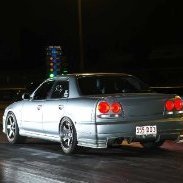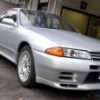Woo Hoo Dump Pipe Finially Arrived
Announcements
-
Similar Content
-
Latest Posts
-
By Murray_Calavera · Posted
@silviaz Maybe have a play with dry guide coat and using the compressor liberally and report back if its working better for you. -
It's just that it looks like it's all gone dry, but when you wet it the different materials darken differently and you can see the traces of the remaining guide coat, which are otherwise too thin to see when dry.
-
Experience has shown that trying to get the simple boost controllers (I have a Profec) set up on the dyno leads to needing to do it all on the road again afterwards. The dyno load is sufficiently different that the gain always ends up wrong and the start boost is wrong, and it ends up surging. Not compressor surge - just overboosting and carrying on. People are probably somewhat acustomed to the modern reality of Haltechs, et al, controlling to a closed loop target.** It's no skin off my nose. The dyno is easily accessible for the little extra tuning that will be required afterwards. And as you say - I stand to gain some useful info. ** On that subject, the idea of torque modelling/targetting is apparently a big OEM thing now. Look at Jason's Engineering Explained YT video on the new Corvette's turbo control system. This sort of thing would appear to be quite achievable in modern aftermarket ECUs, I should think. Is this what people are already doing to avoid the "boost target is 20 psi and I'm going to get there even though the throttle is only 50% open!!!" that I imagine simpler closed loop control would yield?
-
By Murray_Calavera · Posted
$50 says no measurements where done post machine shop. -
By Murray_Calavera · Posted
I'm confused, so your saying after blowing the area off, the guide coat is gone. But then when you wipe it down, the guide coat residue becomes visible again? This isn't a trick question like there is guide coat residue on the rag that your wiping the area down with? I cant see how once something is removed, it comes back when cleaning with wax and grease removed?
-





Recommended Posts
Create an account or sign in to comment
You need to be a member in order to leave a comment
Create an account
Sign up for a new account in our community. It's easy!
Register a new accountSign in
Already have an account? Sign in here.
Sign In Now